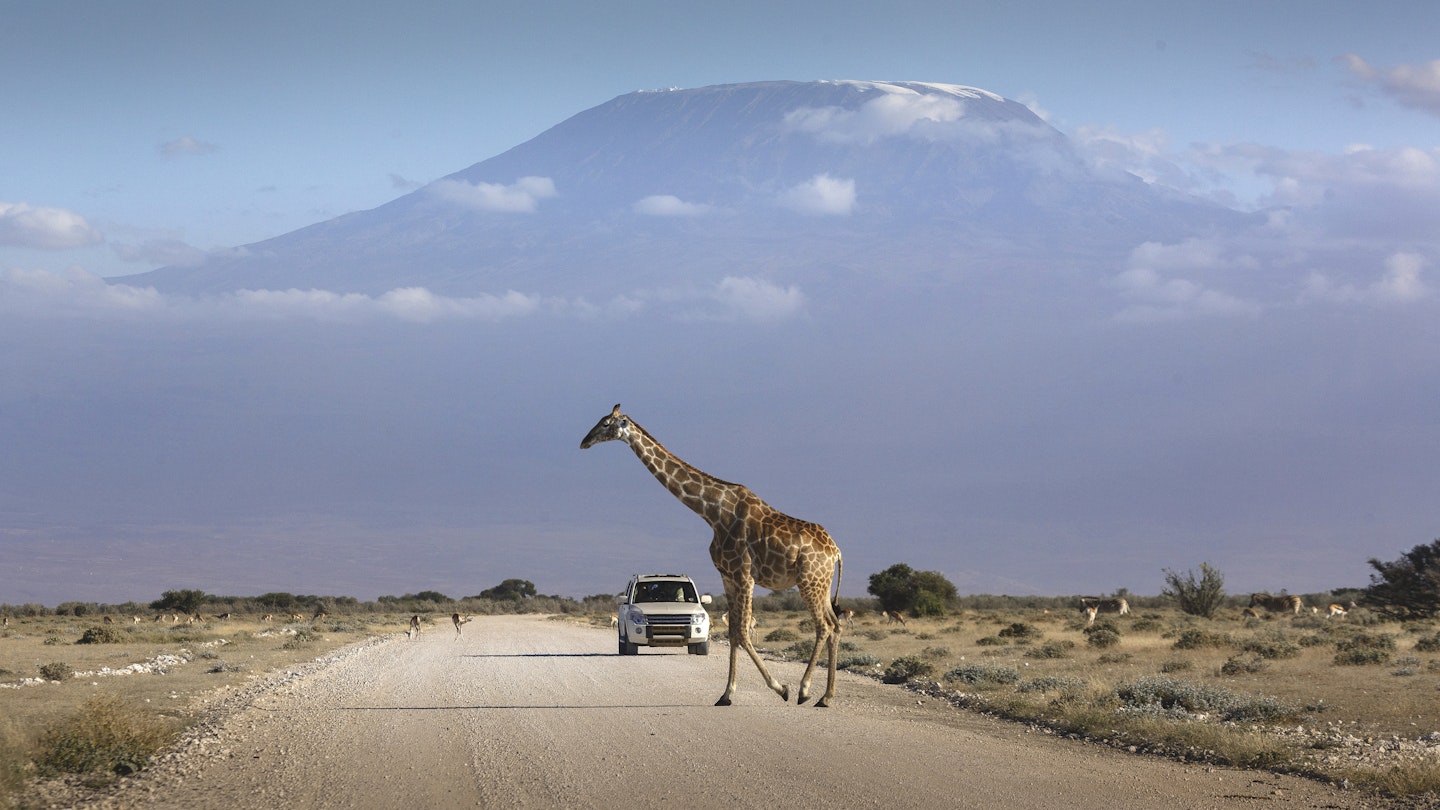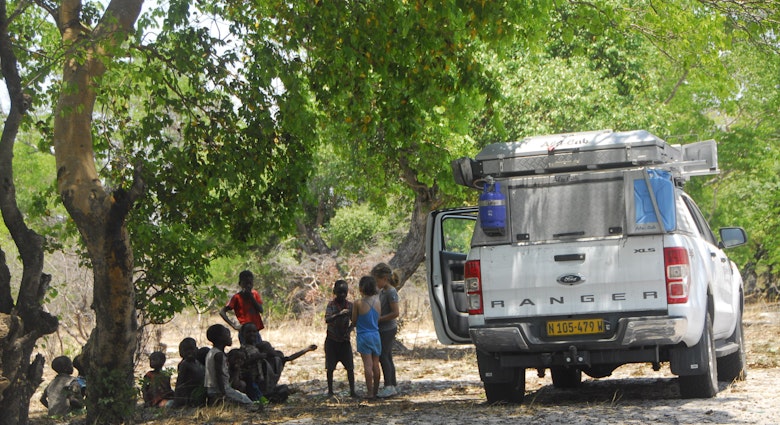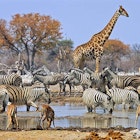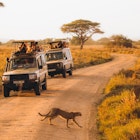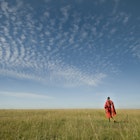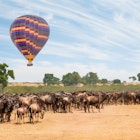With its expansive views, vast national parks and small towns that offer a glimpse into local life and culture, Kenya is the perfect place to take a road trip.
Driving – whether you're behind the wheel or traveling with a driver – provides the freedom to visit Kenya's biggest draws, plus lesser-visited viewpoints and restaurants that lie off the typical trails. When you’re driving in and around the Great Rift Valley and Western Highlands, you could end up making stops like these every few minutes to take in the sights or snap a photo.
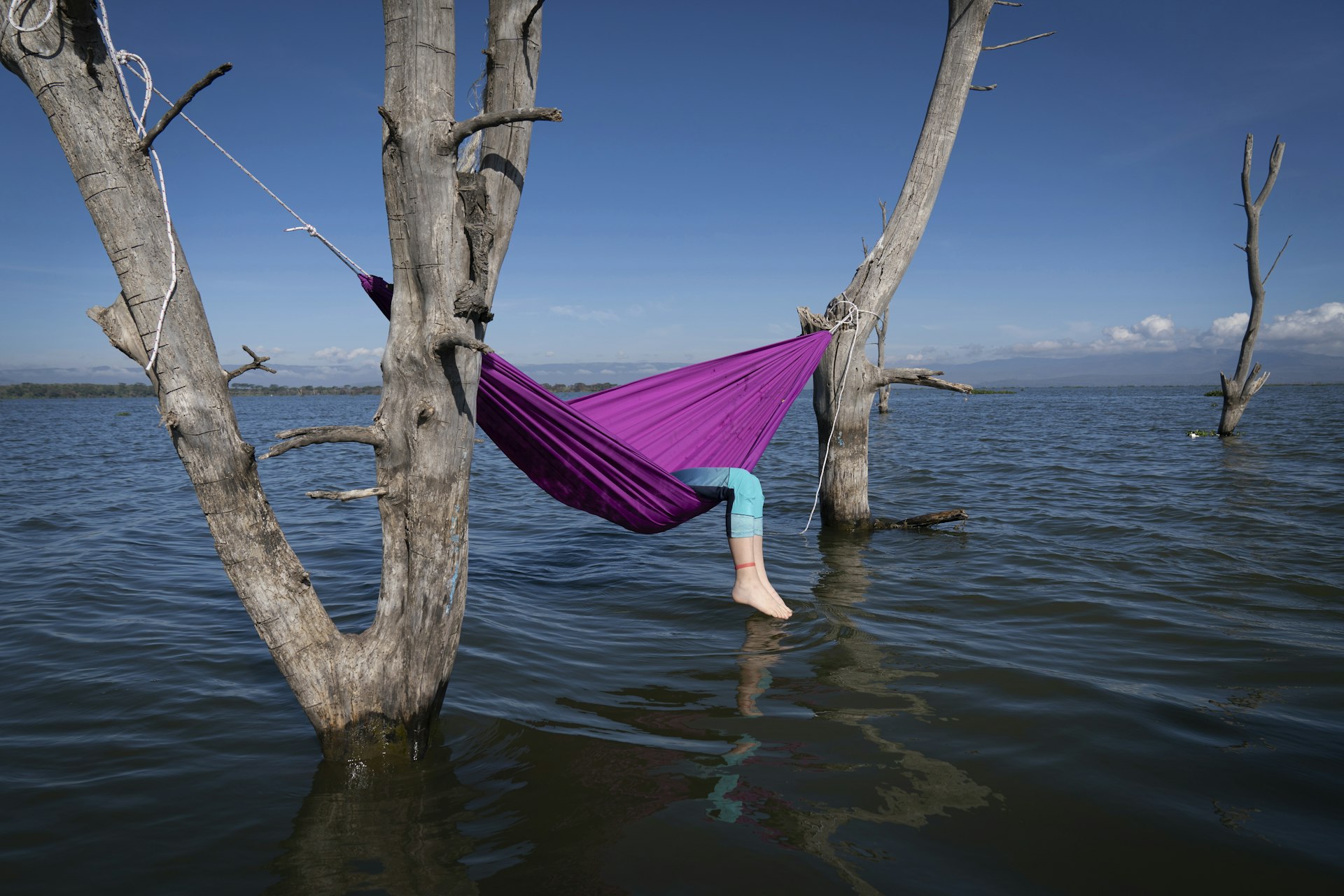
1. From Nairobi to Lake Naivasha and back
Best day-trip drive from Nairobi
Nairobi–Naivasha; 95km (60 miles); allow 1 day
If you want to take a short road trip out of the capital, this day-long drive takes in sweeping views of the Great Rift Valley from spots such as Mathore Viewpoint. From here, you can get an eyeful of this vast system of ridges or escarpments that forms one of Kenya’s most spectacular sights: the valley floor broken up by a series of lakes and volcanoes, active and dormant.
Around 50km (30 miles) along the road from Nairobi, stop off at the Traveler’s Chapel (known locally as the Mai Mahiu Church). This small stone Catholic church built by Italian prisoners of war in 1942 is one of the world’s tiniest churches. Look out for the colorful “Welcome to Nakuru County” sign soon after the church, too; with its map of Africa and distance markers, it’s a popular photo op.
Planning tip: If you decide to overnight near Naivasha, the extinct volcano Mt Longonot and the thick forest inside its crater make for a good stop. Enjoy views of the Great Rift Valley from the crater rim before heading to Lake Naivasha, where wildlife and birdlife gather around the freshwater lake.
2. Head into the Western Highlands to Kisumu
Best road trip for Great Rift Valley views
Nairobi–Kisumu; 360km (225 miles); allow 7–10 days
Drive northwest from Nairobi to Lake Nakuru and then onward to the lake city of Kisumu for a beautiful journey through western Kenya, with views of the northern Great Rift Valley en route.
The Nairobi–Naivasha Highway passes through the town of Kericho, where you can stock up on snacks and drinks and experience everyday life outside of the capital. Here you'll also find beaches and safari lodges.
Around Kericho are several tea farms and the Mau Forest, prime road-trip territory with just the right amount of winding routes for driving pleasure. Once you reach Kisumu on the northeastern shore of Lake Victoria, stay a while to soak up the vibes of this relaxed port town, wander its market, explore its impala sanctuary, and enjoy sunset views.
3. From Nairobi to Lake Magadi
Best weekend-long road trip from Nairobi
Nairobi–Lake Magadi; 112km (70 miles); allow 2 days
If you don’t want to travel too far from Nairobi but would like a rewarding journey with a beautiful lakeside finale, head south to Kenya’s “pink lake,” Lake Magadi.
The Nyama Choma restaurant at Olepolos Country Club, about an hour along the road from Nairobi is a good bet for lunch. Nyama choma means “barbecue meat” in Swahili, and while you’ll find plenty of roadside stalls serving grilled goat meat, barbecued chicken and crunchy corn snacks, Olepolos is a relaxing spot with great views and hiking trails.
Continue the drive past acacia trees and traditional villages toward the soda lake of Lake Magadi, home to flamingoes and other wading birds. Bring a picnic or head to the Lake Magadi Sports Club and Tented Camp for lunch. It’s a lovely lakeside spot – especially at sunset – that serves good food. If you want to stay overnight, you can choose between comfortable rooms and safari tents.
Planning tip: It’s worth making time for an overnight stay around the Ngong Hills, where you can stretch your legs with a cliff walk or hike on the valley floor.
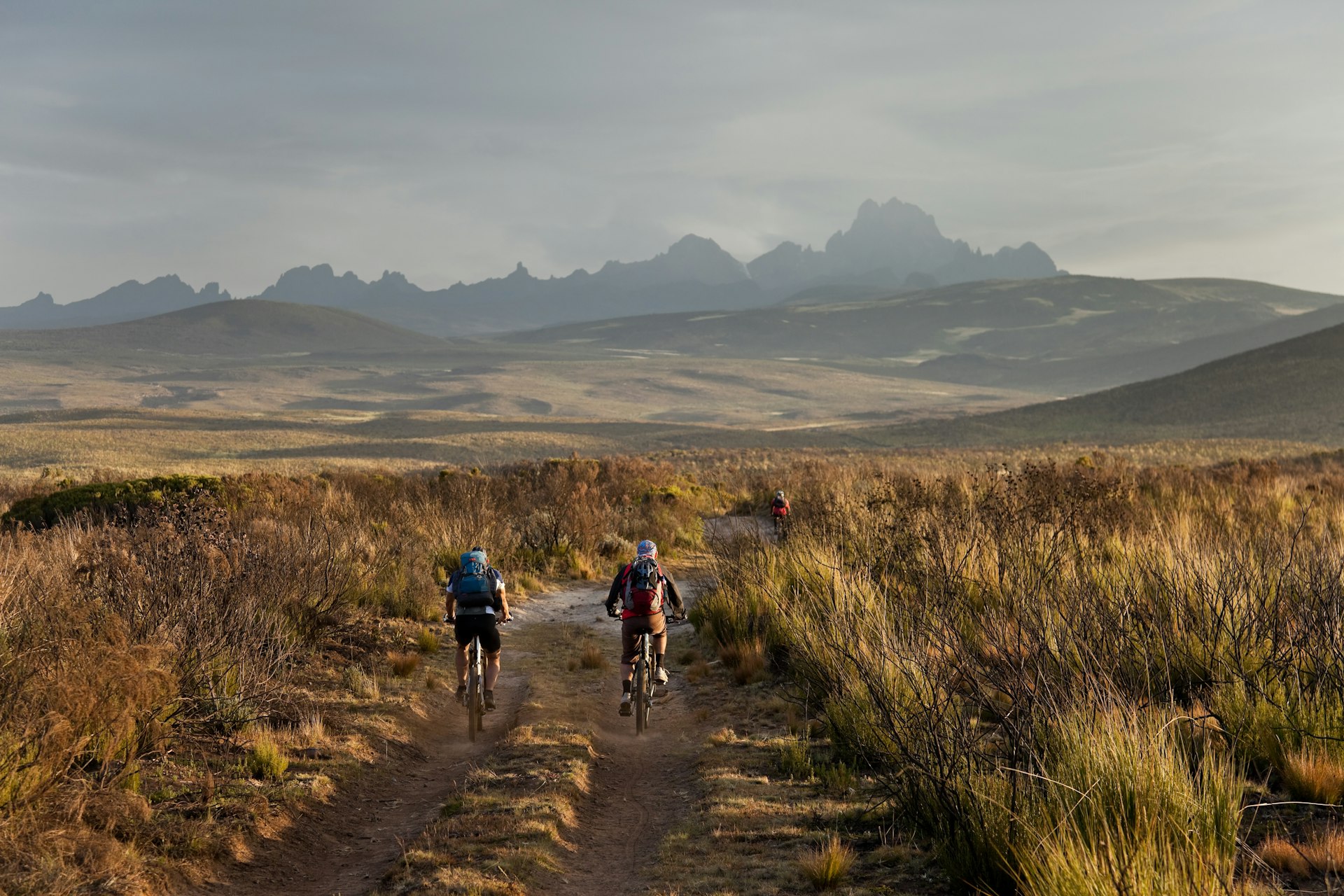
4. Get into the great outdoors at Mt Kenya
Best drive-and-hike road trip
Nairobi–Mt Kenya National Park; 213km (133 miles); allow 3 days
Watch the scenery transform from urban sprawl to lush green countryside as you drive north out of the capital toward Mt Kenya National Park for hiking, climbing and wild camping. You’ll pass the town of Thika – be sure to pick up local pineapples from one of the roadside stalls. From there, enjoy an active stop at Sagana Camp, about 95km (60 miles) from Nairobi, where you can camp, raft and zipline.
A popular stop-off before Mt Kenya is the equator sign just before you enter Nanyuki town – it’s hard to resist snapping a selfie. Browse the goods at the craft market, which also has an excellent coffee kiosk and a convenience store selling ice creams, drinks and snacks. Nanyuki is the gateway town to Mt Kenya and a lively place, ideal for picking up nyama choma (grilled goat meat), grilled corn and other snacks.
Planning tip: If you have time, continue the drive to the lush, swampy and wildlife-packed Meru National Park, west of Mt Kenya. Lesser-visited Meru has an adventurous off-the-beaten-track vibe and wonderful views of Mt Kenya.
5. Hit the Nairobi to Mombasa Highway
Best bush-to-beach road trip
Nairobi–Mombasa; 490km (305 miles); allow 10 days
You could fly or take the train to Mombasa, but for an adventure, make your way through the landscapes and wildlife of Amboseli and Tsavo East and West national parks before relaxing on the Indian Ocean beaches. The Nairobi to Mombasa Highway is a good, mostly double-lane road and you can take an enjoyable detour to Amboseli, known for its gorgeous scenery dominated by Mt Kilimanjaro. Stay here for a few nights to see elephant herds.
From Amboseli, you can double back to the main highway to reach Tsavo’s national park. A more direct road heads west to Tsavo West, but this is only an option if it’s dry and there have been no incidents or adverse weather – ask rangers or staff at Amboseli for the latest road information. Tsavo (East and West combined) is one of Kenya’s largest parks, renowned for its wild landscapes of hills, craters and rocky scrubland. About 100km (62 miles) of highway runs between Tsavo West and Tsavo East National Park, so you may spot zebras, monkeys and even giraffes and elephants on your drive. Part of the road also runs alongside the railway line, so if your drive syncs up with a train, it makes for a great experience (and photo) as you chug alongside each other.
You’ll notice the terrain changing to a lusher, hillier one with cooler temperatures as you pass the town of Mtito Andei, between Tsavo East and West, and through the lush landscape of Shimba Hills. As you approach Mombasa, decide between the sweeping white-sand beaches of Diani and Galu south of the city, or go north for Kilifi’s bohemian vibe, the excellent snorkeling at Watamu or the old-town atmosphere of Malindi.
6. On the road to Lake Turkana
Best road trip for serious adventurers
Nairobi–Turkana; 700km (435 miles); allow 6–12 days
Visiting the Lake Turkana National Parks is an adventure in itself, but one that's worth the effort of intrepid travelers; the terminus features striking arid volcanic landscapes surrounding a salty, crocodile-filled crater lake – the vivid “Jade Sea” of Lake Turkana – and traditional fishing villages and communities.
From Nairobi, it takes around six hours to reach Samburu National Reserve, 300km (185 miles) away, where a night in a tented camp offers the chance to enjoy the riverside setting. A shorter drive (four to five hours) on day two takes you to Marsabit National Park, an unexpected patch of green amid the desert, and home to an extinct volcano. Spend a night at Kalacha on the edge of the Chalbi Desert (around four hours from Marsabit); Basic Kalacha Camp is an excellent spot to experience the solitude and desert landscapes before embarking on the eight-hour drive to Loiyangalani on Lake Turkana’s eastern shores.
Walking and exploring the “Jade Sea” of Lake Turkana is the highlight, with its crocs, hippos and migratory birds. This region is also home to the El Molo tribe, one of Kenya’s smallest communities, who make a living from fishing and brave the crocodile-filled waters to do so.
Planning tip: If you take a community tour, be sure to ask the operator what you'll be doing and where the money goes. Simply “viewing” the people and their lives isn't recommended and doesn't support their local economy.
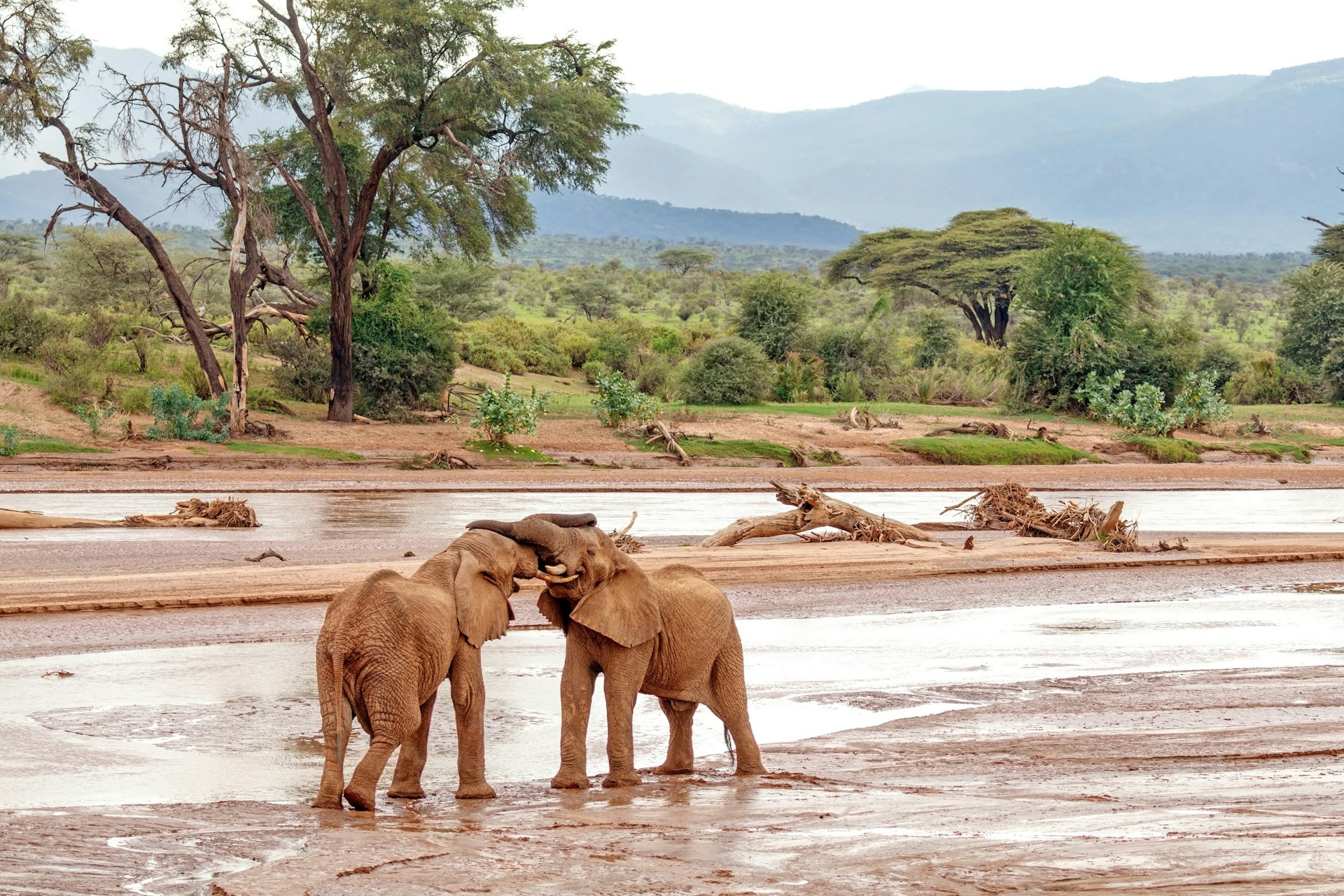
7. Desert adventures to Samburu
Best road trip for wild landscapes
Nanyuki–Samburu; 130km (80 miles); allow 5 days
If you’re heading to Kenya’s northern Samburu National Reserve, a road trip is one of the best ways to appreciate the variety of the country’s landscapes and how they change – the lush scenery gives way to desert and mountains. Samburu is a remarkable wilderness, and you can go for quite a while without seeing another car.
Stop off in the town of Isiolo, a community surrounded by hills and known for its large market. Head to the Catholic Church bell chamber for mesmerizing rooftop views over the urban sprawl. Carry on up to the Samburu villages around Archers Post or toward Ngurunit at the base of Mt Poi and northwest of Samburu reserve, before spending a few days in the national park, famous for its wildlife “Special Five”: gerenuk (long-necked antelope), reticulated giraffe, Grevy's zebra, Somali ostrich and common beisa oryx (antelope).
Tips for driving in Kenya
Kenya’s main roads are mostly in good condition, but you’ll find a lot of unpaved and sometimes potholed roads, too. Make sure you rent a suitable set of wheels for the types of terrain you're planning to visit – check with the car rental company if you aren't sure. Knowing basic car maintenance is useful; breakdown assistance can take a long time if you’re somewhere remote.
The rules of the road can be erratic, and driving in Kenya isn’t for the faint of heart. Truck traffic can mount up, and there’s a fair bit of passing, even on single-lane mountain roads.
From a safety perspective, it’s wise to drive during daylight hours because of poor street lighting, variable road conditions and crime such as carjacking. Check your government’s travel advice for the latest on specific regions and ask the car rental company for up-to-date information on arrival.
Lonely Planet contributor Helena Smith provided additional edits and fact-checking.

